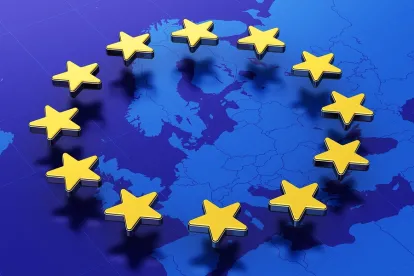On 13 December 2022, European co-legislators (European Parliament and Council of the EU) reached a political deal on the world’s first levy on carbon intensive goods—the so-called Carbon Border Adjustment Mechanism (CBAM). The file is a fundamental piece of the “Fit for 55” package proposed by the European Commission (Commission) in July 2021, that aims to reduce EU greenhouse gas emissions by 55% by 2030, and of the broader EU Green Deal, the EU plan that moves the bloc towards carbon neutrality by 2050. The agreed upon text is not yet public. After extensive discussions and negotiations regarding CBAM for more than one year, this is a major development that will have profound implications for climate and energy interests, international trade, and geopolitical relations. Global companies should consider the impacts of CBAM on their operations and commercial plans and assess whether changes are needed in order to offset potential impacts.
The objective of the new carbon pricing framework is to create a level playing field between the price of carbon paid for EU products under the Emissions Trading Systems (ETS), and the price paid for imported goods. In fact, the CBAM is designed to mirror and complement the current ETS’ functioning on imported goods.
The scope of the new regulation, initially proposed by the Commission to cover imports of goods from five emissions-intensive sectors considered to create great risk of carbon leakage into the EU (i.e. electricity, iron and steel, cement, aluminum, and fertilizers), has been expanded under the provisional agreement. Under the agreed upon text, the CBAM also covers hydrogen as well as some precursors and some downstream products such as screws and bolts of iron or steel. Moreover, it will also cover indirect emissions (carbon emissions linked to the consumption of fossil electricity) under certain conditions. The mentioned sectors cover between 50% and 60% of the EU’s industrial carbon footprint.
Under the CBAM, companies importing in-scope products into the EU will be obliged to buy certificates to cover the embedded carbon content in the products, unless they can prove that such carbon emissions have already been covered by the relevant legislation in the producer’s country. This way, the EU aims to incentivize third-countries to increase their climate ambitions and ensure that the EU and global climate efforts are not affected by the reallocation of goods’ production from EU countries to third countries with less ambitious climate policies.
Initially, the CBAM will work in parallel with the ETS, which is currently under revision. In order to avoid double protection for EU industries, the CBAM will be phased-in at the same time that free allowances under the ETS will be phased-out for the sectors concerned. Once this transition is completed, the CBAM will have fully replaced the ETS in all sectors. The ETS phase-out still needs to be agreed to in the negotiations on the ETS revision, which are ongoing and are set to be finalized in the coming days.
Application of CBAM will begin on 1 October 2023 with a transitional period where importers will only have to comply with reporting obligations. After the end of the transitional period, full obligations will kick in. However, the exact length of this transitional period has not been agreed upon yet. The Commission and the Council of the EU (Council) propose a three-year transitional period, whereas the European Parliament (Parliament) proposes a four-year period. The length of the transitional period will be linked to the phasing out of the free allowances under the ETS. Prior to the end of the transitional period, the Commission will assess whether to extend the CBAM’s scope to cover all goods under the ETS by 2030.
Another key element that remains undecided under the CBAM’s provisional agreement is whether to compensate EU exports, which will not be protected by the levy, in order to prevent carbon leakage. The Council, at the end of the CBAM inter-institutional negotiations, acknowledged that further work needs to be done in this area in the coming period, before the final text is formally adopted by the co-legislators.
Now, the CBAM will have to be formally approved by the Council and the Parliament prior to its publication in the Official Journal of the European Union and its entering into force. However, given the close link between CBAM and the revision of ETS (as well as the proposal for a Social Climate Fund which is also being discussed currently), the CBAM regulation will be formally adopted only once the CBAM-related elements are agreed to in the other related files.
As the EU process to formalize CBAM moves forward, K&L Gates’ integrated Policy & Regulatory practice area is engaged on the CBAM issue, and working globally with colleagues to understand the implications for energy, climate, international trade, and taxation implications arising from the enactment of the CBAM. Our teams can assist companies impacted by the CBAM in considering what strategies and actions to deploy to mitigate any impacts.
Paula Esteban Gomez also contributed to this article.





 />i
/>i

